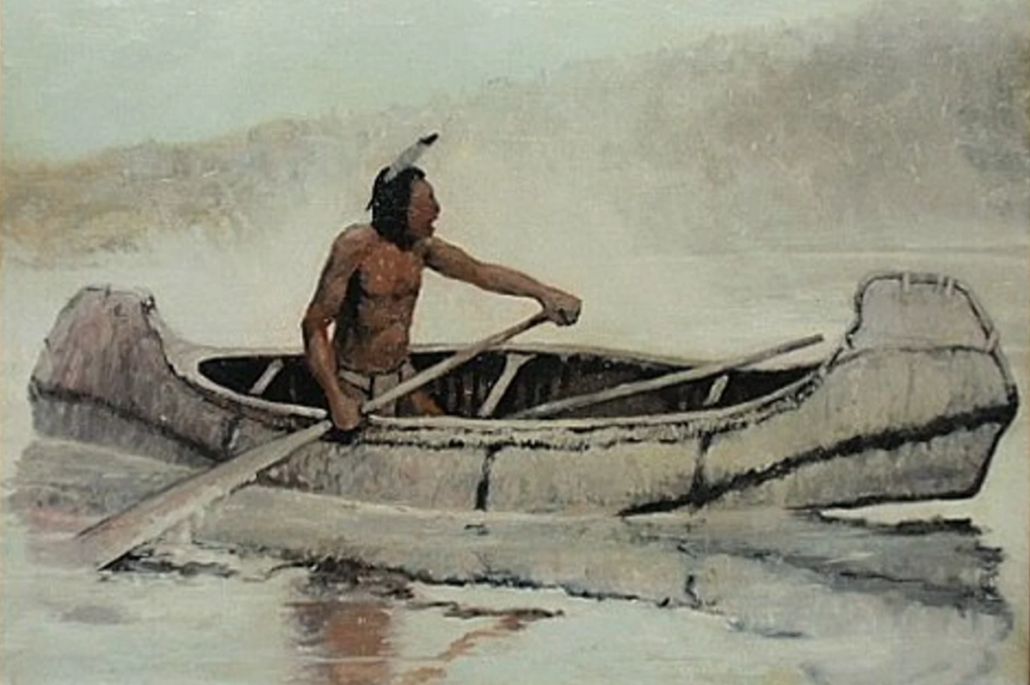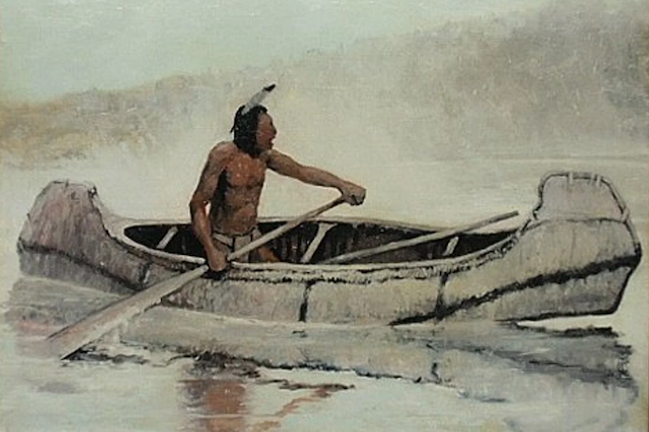
BRUNSWICK, Maine (AP) – One of the oldest-known examples of a Native American birch-bark canoe is on display at a museum in Maine, where indigenous tribes have used them for thousands of years.
The canoe put on display on Thursday dates to the mid-1700s, members of the Pejepscot Historical Society said. It’s an example of the type of canoe that was critically important to the history and culture of the Wabanaki, the first people of parts of northern New England and Atlantic Canada.
This type of canoe was “extremely important for your family’s survival” for the Wabanaki people, said the Penobscot Nation’s tribal historian James E. Francis Sr., the Penobscot, one of four Wabanaki tribes still existing in Maine, still build them today.
“The canoe took you to those places that you needed to go and the landscape that had the food. For a riverine people like the Penobscot, some would argue that the birch bark canoe is the most important technology that we have,” Francis said.
The historical society came into the possession of the canoe in 1889 and recently had it carbon dated, said Larissa Vigue Picard, executive director of the society. It was donated to the society after being passed down for generations in the family of Harpswell, Maine, sea captain William Barnes, who received it as a gift from a tribe, she said.
It’s one of few early birch bark canoes still in existence because of the fragility of the material.
The 161/2-foot canoe had spent the last three decades in a barn, Vigue said. It suffered somewhat from being exposed to the weather, but a master birch bark canoe builder has been working to conserve it since the summer.
The builder, Steve Cayard, of Wellington, Maine, has been working on birch bark canoes for more than 40 years. He said the Native American models served as the template for modern canoes. Birch bark is flexible and the canoe itself is fairly light, which made it the material of choice for Native American canoe makers wherever it was available, he said.
“It made longer journeys possible, and it facilitated trade,” Cayard said. “The birch bark canoes are the ancestors of all modern canoes.”
_______
By PATRICK WHITTLE, Associated Press
Copyright 2017 Associated Press. All rights reserved. This information may not be published, broadcast, rewritten, or redistributed.


